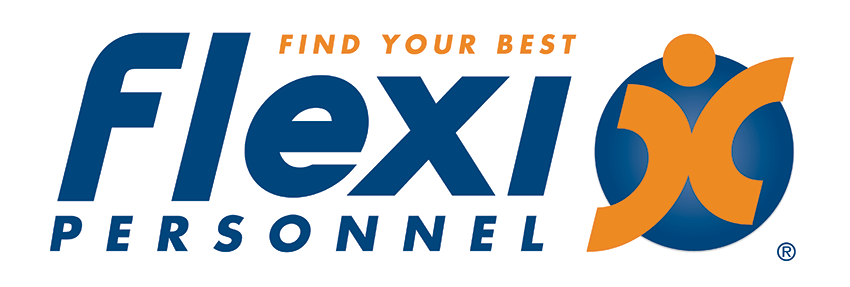
What is induction and how does it affect your bottom line?
Staff recruitment is a lengthy, costly and time consuming process.
A new employee is becoming a part of an existing group dynamic, corporate structure and culture. Don’t short change yourself by investing into the recruitment of a new business resource, by following up with a substandard staff induction process.
Unfortunately, many companies spend more time explaining how the coffee machine works than fully arming new staff to effortlessly fit into their new role and the company. Showing the new recruit to their workstation, armed with only a manual and a company pen will cost you time, productivity and therefore, money.
The better way to induct your new staff member is to have a checklist of things to cover, in a set timeframe, pairing the new recruit with a buddy, and to make the induction period equal to the length of the probation period.
If your probationary period is for 6 months, make your staff induction period for 6 months. Why? Because this is the process you follow to track if you have hired the right employee, during their probationary period, before they are contracted to be permanent staff. Don’t just expect your new employee to ‘work it out for themselves’. It is best practice and more profitable to ensure your new team member becomes as productive and efficient as possible in as little time as possible.
The induction process can make or break the success of a new employee. A great staff induction process leads to higher levels of job satisfaction, higher staff retention, a fast track to optimal productivity from that person, a friendly orientation into the culture of the organisation and has clear benefits for your bottom line and staff engagement.
What is induction?
Staff induction programs are designed to provide new-starters with the information they need, as well as getting them up to speed on how the organisation works. It sets out expectations for the employee’s role and workplace behaviors, provides relevant company history, and informs the new recruit about the company’s future business strategy, plans, vision, values and HR Policies. It should be a friendly and warm entry into a pre-existing workplace, and allow for on the job training of internal systems, software, processes and include everything from OH&S to how to join the footy tipping comp. It gets that person ‘up to speed’ to become a productive employee as quickly as possible, fully armed with the knowledge, and skills required to do their best work.
The how to guide to a great staff induction process
At Flexi we recommend a six part induction process that is worked through by the new employee and their manager for the duration of the probationary period. You should develop and follow a well thought out, detailed checklist and timeline to ensure that the induction process runs as smoothly as possible and you are giving your new recruit the best opportunity to succeed in their role and your organisation.
The Pre-arrival
The pre-arrival period covers setting up all the necessary items before the new recruit starts with the business. From your checklist, you should organise everyone who is involved with the induction process, making the necessary appointments and ensuring people understand how important the induction is. You should ensure that the new employee’s workstation is ready and equipped with all the necessary items such as stationary and the necessary security access for your computer network. You should consider a buddy system for the new recruit, assigning someone who they don’t work directly with, but someone personable, and trustworthy. A go to person for general enquiries and the start of a social network within the workplace.
Day 1
The first day in any new organisation can be nerve racking so it’s important on the first day to spend the time to make the new recruit comfortable. Spend the time orienting them into the physical space that they will be working in. Introductions are critical, make sure they know the key people, who reports to who and where to find people in the organisation – especially the ones who they will be meeting with in the first week. Make sure the workstation is functioning as it should, they have computer access, the email system works, and they have all the necessary stationary items. Organise for a few other staff members to have lunch with you and the new recruit. Day one is about making them feel comfortable and welcome.
The First Week
Within the first week, the following items should be covered;
- A basic introduction to the company structure, history and culture, including how their role fits into the bigger picture should be completed by a senior manager or the business owner.
- You should cover the more in-depth policies, processes, systems and clarify their role, tasks, and expected behaviours, outcomes and performance measures with the rewards for achieving them being discussed.
- A guided tour of the building, and a virtual tour of the website.
- Specific on the job training of internal systems, phones, photocopiers, the intranet, how to order stationery.
- Cover all relevant OH&S procedures and policies, and building access, security and emergency procedures.
- Cover the set up of payroll details and introduction to the terms and conditions of employment and explain your HR policies.
- Explain the recruit’s current role, and any future opportunities such as education and training, development and career pathways, rewards and incentives and provide a clear vision of their potential within the company.
The First month
You should schedule in a discussion about how the induction process is working for them and what they think they need more clarity on. Your new recruit will still be finding their feet so this discussion should be informal and focused on ensuring that they have received everything outlined on the induction check list.
The Three month
At the three month mark it’s now time to get a little more serious with your new recruit. They should have settled in and be performing their role to an acceptable standard. You should discuss performance, set goals and discuss the targets for the person, the department and the company. Be detailed and specific to ensure expectations are understood. If you have any concerns about the new recruit they need to be raised with them and addressed so that sufficient time is provided for them to remedy those concerns. You should document this discussion.
At Six months
At the six month mark you should be in a position to complete a full performance review and ensure that the new recruit is meeting the organisations expectations. The induction checklist should be completed and feedback taken about the process for future improvement opportunities. Once a full review has been completed and you have confirmed that they have passed the six month probationary period, you will need to confirm their permanent status and celebrate this occasion in an appropriate way.
TIP: Staff inductions are also perfect times for someone with a fresh set of eyes to provide feedback about what they are seeing in the business – obviously this would rely on the manager asking for that feedback and then doing something with it!
Best practice equals best performance.
Which company would you rather work for? Best practice often involves asking yourself what would you want in a best-case scenario. Is it being thrown in the deep end, armed only with a handshake and a company pen? Or with a 6-month, well planned, timed and executed orientation? Which method tells you that you are a valued employee? Which process equips you to do your best work for the company within the first few weeks?
If your business requires support developing its induction program, speak to the HR Consulting team at Flexi Personnel.





